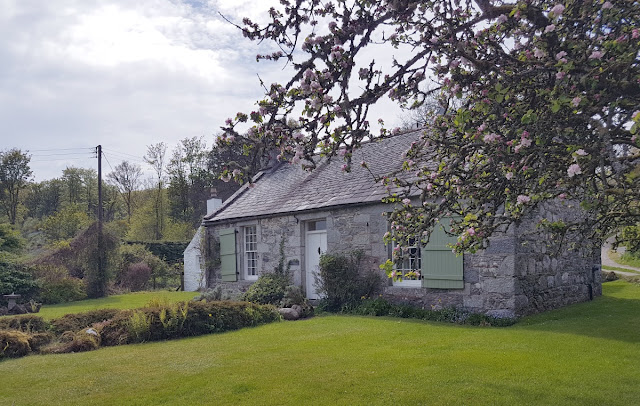Chapel Finian
North of Port William beside the road is Chapel Finian, a ruined chapel dating from the 9/10th C supposedly a chapel to welcome weary pilgrims landing on the shore of Luce Bay, en route to Whithorn. In a similar way to St Ninnian's Chapel, Isle of Whithorn.
There may of being a previous building on the site predating the ruins.
Finian was a 6th-century contemporary of St Columba and some historians believe that the name Finian derives from Uinniau, a 6th-century bishop who helped establish Christianity in south-west Scotland. Uinniau has also been identified as St Ninian, whose cult flourished at Whithorn.
Historic Scotland
Below from Canmore
Information from ‘Exploring Scotland’s Heritage: Dumfries and Galloway’, (1986).
The foundations of this small rectangular chapel lie close to the coastal road and the shore on the old raised beach at Corwall Port. Oriented east-west, it has a south doorway and there are three buttresses on each of the side-walls, one in the centre and one against each corner. Excavation revealed evidence of a stone bench, possibly encased in wood, set against the inner eastern face of the south wall. The mortared masonry includes use of large upright stones set on edge to form foundation-courses and door-jambs. The building is tightly enclosed within the footings of a drystone boundary wall, and a stone-lined well lies outside, close to the entrance-gateway in the roadside dyke.
In 1684 this building was described as 'a little ruinous chapel call'd by the country people Chapel Finzian'. It probably takes its name from St Finian of Moville (Co. Down, Ulster), who was educated at Whithom and died in about 579. The site may mark an episode in the life of the saint, and it may have been a landing place for Irish pilgrims to St Ninian's shrine.



Comments
Post a Comment